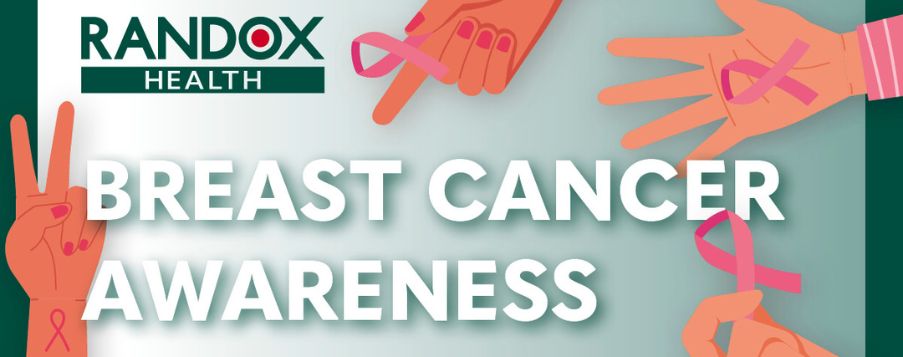14/10/2022
Breast cancer awareness month occurs each October and aims to encourage women to be breast cancer aware. Breast cancer can occur at any age after puberty, but the risk of development increases with age.
According to the International Agency of Research on Cancer (IARC), in 2020, breast cancer became the most commonly diagnosed cancer in the world; with more than 2.6 million new cases of breast cancer worldwide.
![Breast Cancer awareness3[5634]](/wp-content/uploads/2022/10/Breast-Cancer-awareness35634-1.jpg)
Check for Changes
A helpful guide from the NHS outlines simple steps for self-examination and important changes to look out for, including:
- Appearance – a change in size or outline, puckering, dimpling or redness
- Lumps – any lumps or thickening that feels different, any swelling around your armpit or collarbone
- Feelings – pain or discomfort on part of your breast or armpit, especially if new and persistent
- Nipple change – if one has become pulled in, changes shape, has discharge, bleeding, rash or crusted, flaky skin
Genetic Cancer Risk
Breast and ovarian cancer can be strongly influenced by genes and can run in families. According to Cancer Research UK, your risk of breast cancer approximately doubles if you have a first degree relative who has been diagnosed.
The WHO outline that certain inherited gene mutations can greatly increase the risk of breast cancer, including BRCA1 (BReast CAncer gene 1) and BRCA2 (BReast CAncer gene 2). Both BRCA1 and BRCA2 are genes that produce proteins that help repair damaged DNA. The National Cancer Institute outline that a mutation in these genes can be inherited by either parent.
You may recognise a specific pattern within your family history which could indicate an inherited cancer risk. Macmillan outline that these can include:
- Several close family members have been diagnosed with the same or related cancers
- Diagnosis at a younger than usual age
- Someone in your family has had multiple types of cancer, not linked to a spread from one primary cancer
- Consecutive generations of cancer diagnosis in your family
Genetic Testing
The Genetic Breast & Ovarian Cancer Risk test covers 8 different genes associated with both hereditary breast and ovarian cancer, including BRCA1 and BRCA2.
Detailed genetic risk tests are available including Genetic Cancer Risk which covers 94 different genes suspected to play a role in predisposing cancer.
Identifying a genetic mutation associated with Breast and Ovarian cancer early can be beneficial in helping you to understand your future health.
If you would like to speak with a Genetic counsellor regarding genetic testing, please get in touch HERE. A consultation will include discussing the details of the test, the impact for yourself, your family, and how the results can be used by you.



